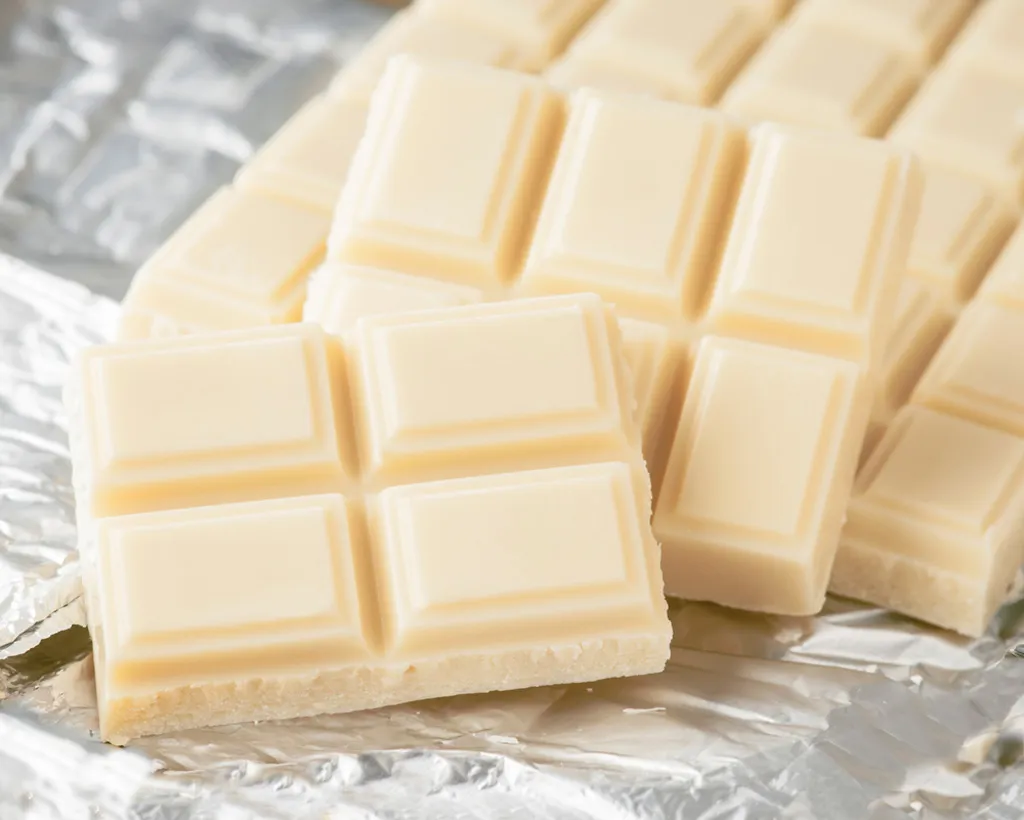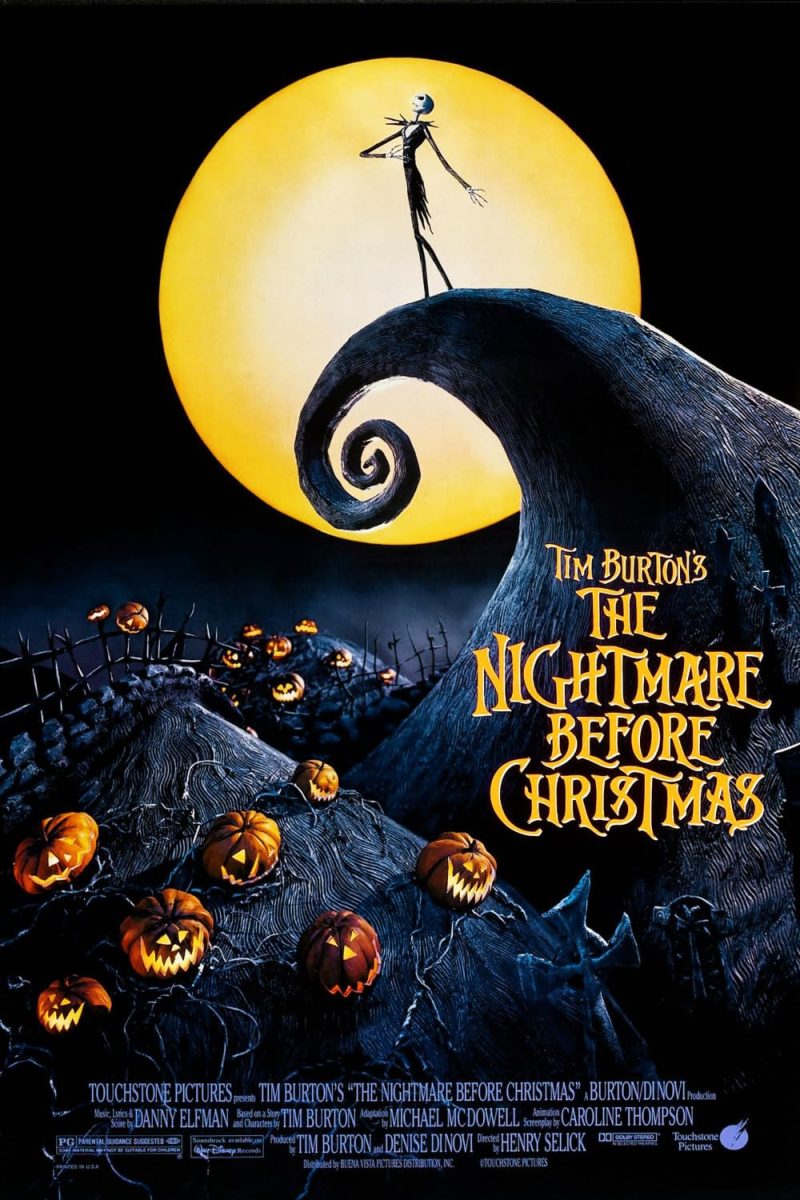At first glance, the term “white chocolate” seems like an oxymoron. The word “chocolate” has always implied a rich, dark brown color, far from the color “white.” White chocolate could be similar to hamburgers (its name suggests that it’s made with ham when it is actually made with beef). Yet, the FDA still considers white chocolate to be a specific type of chocolate. So, is white chocolate truly chocolate, or have we been lied to this whole time? Let’s settle the dispute once and for all.
On the Surface
As the name suggests, white chocolate is a white color. It’s not pure white, but it’s more of a yellowish-white. (Or at least it should be. If it is whiter than ivory, then you should check the ingredients for cheap ingredients and artificial colorings.) Still, this differs greatly from the brown or dark brown color of milk chocolate and dark chocolate.
White chocolate, milk chocolate, and dark chocolate all look like they have a similar texture- silky and smooth. However, after tasting a sample of each, you’ll notice that white chocolate is much creamier than milk chocolate and even creamier than dark chocolate. Regarding taste, you’ll notice that white chocolate is much milkier and sweeter than the other types of chocolate. It also doesn’t contain the richness that characterizes the other types.
Below the Surface
- So white chocolate doesn’t look a whole lot like chocolate on the outside, and it tastes quite different. But we’ve all been told not to judge a book by its cover, so let’s look inside. Based on the differences in taste and texture between white chocolate and the other chocolates, it’s not difficult to conclude that white chocolate contains some unique ingredients and excludes some ingredients in the other chocolates.
White chocolate is mainly cocoa butter with a load of sugar, milk solids, milk fat, vanilla, and lecithin (fat) added in for good flavor. However, in the past, companies have notoriously manufactured white chocolate with cheap sweeteners and fats to replace or supplement the original ingredients. This creates a cheap, overly sweet taste that has and continues to turn people against white chocolate.
Milk chocolate and dark chocolate are predominantly made of cocoa liquor, but sugar, vanilla, and lecithin are common additives. Milk chocolate is sweetened and contains milk solids, while dark chocolate contains varying levels of sugar, vanilla, and lecithin and does not contain milk.
So, white chocolate, milk chocolate, and dark chocolate all contain varying amounts of sugar, milk, vanilla, and lecithin. However, the main cocoa ingredient is different. White chocolate contains cocoa butter, while milk chocolate and dark chocolate contain cocoa liquor.
Behind the Scenes
We’ve found that the key difference between white chocolate and chocolate is the type of cocoa ingredient used. Now, what exactly makes cocoa butter and cocoa liquor different? To answer this, we must explore how these two ingredients are produced.
Both cocoa butter and cocoa liquor are derived from cacao beans, the seeds of the cacao fruit. After the cacao beans are removed from the pod, they are fermented, dried, and roasted. Then the shell of the beans is discarded, leaving cacao nibs. The nibs are ground into a paste, known as cocoa liquor. This is the key ingredient in milk chocolate and dark chocolate and gives these chocolates their distinct dark brown color. Cocoa liquor is made up of cocoa solids and cocoa butter. The cocoa butter is extracted to make white chocolate.
We see that white chocolate does not contain the cocoa solids that other types of chocolate have. Does this exclude white chocolate from being considered “chocolate”?
By the Law
Regardless of our subjective opinions, the FDA (U.S. Food and Drug Administration) has established a set of criteria regarding white chocolate. Previously, the FDA characterized white chocolate as a “confectionary” since it does not contain cocoa liquor. However, in 2002, the FDA established a new standard for white chocolate, separating it from other kinds of chocolate. This standard states that white chocolate must contain at least 20% cocoa butter to be considered “white chocolate”.
So, the law recognizes white chocolate as a specific type of chocolate.
The Dictionary Definition
The Oxford Languages dictionary defines “chocolate” as “a food preparation in the form of a paste or solid block made from roasted and ground cacao seeds, typically sweetened.” Since white chocolate is made from cocoa butter extracted from roasted and ground cacao seeds, it more or less fits this definition.
We’ve concluded that
- White chocolate does not look or taste like chocolate, but it has a similar texture.
- White chocolate does not contain the cocoa solids that are found in other kinds of chocolate.
- The FDA recognizes white chocolate as a specific type of chocolate.
- White chocolate fits the dictionary definition of “chocolate” because it is derived from cacao seeds.
Let’s go back to our original question. Is white chocolate truly chocolate or is it just a lie?
Well, I’ll let you decide. (Or you can step away from the dispute and just appreciate white chocolate for what it is!)
I, for one, will go ahead and enjoy a nice and warm plate of macadamia nut cookies (with white chocolate chips of course!).







